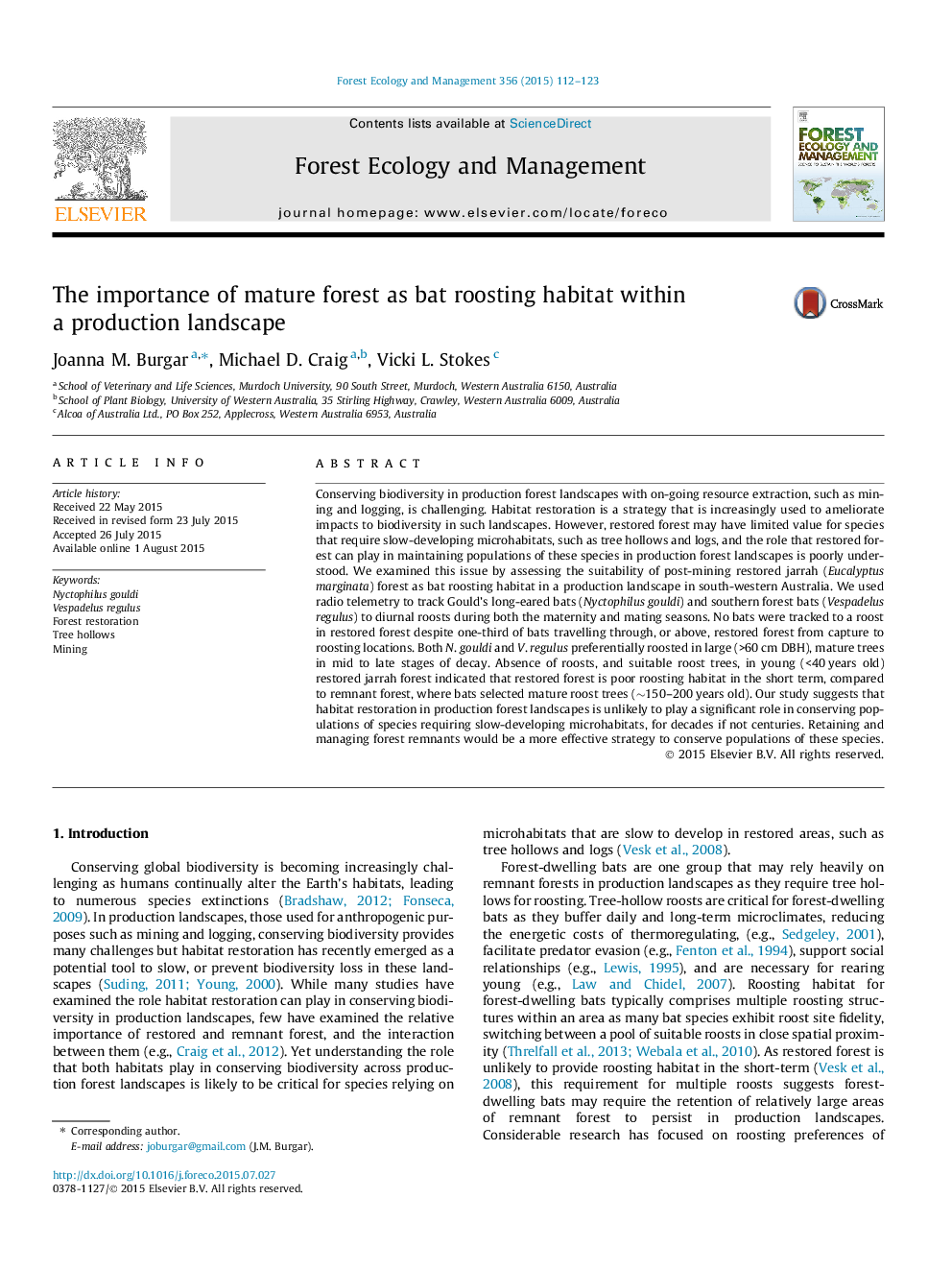| کد مقاله | کد نشریه | سال انتشار | مقاله انگلیسی | نسخه تمام متن |
|---|---|---|---|---|
| 86192 | 159171 | 2015 | 12 صفحه PDF | دانلود رایگان |
• We used radio telemetry to determine roosting preferences of two bat species.
• Both species preferentially roosted in large, mature trees.
• Not one individual was tracked to a roost in restored forest.
• Remnant forest is imperative to conserve bat populations in production landscapes.
Conserving biodiversity in production forest landscapes with on-going resource extraction, such as mining and logging, is challenging. Habitat restoration is a strategy that is increasingly used to ameliorate impacts to biodiversity in such landscapes. However, restored forest may have limited value for species that require slow-developing microhabitats, such as tree hollows and logs, and the role that restored forest can play in maintaining populations of these species in production forest landscapes is poorly understood. We examined this issue by assessing the suitability of post-mining restored jarrah (Eucalyptus marginata) forest as bat roosting habitat in a production landscape in south-western Australia. We used radio telemetry to track Gould’s long-eared bats (Nyctophilus gouldi) and southern forest bats (Vespadelus regulus) to diurnal roosts during both the maternity and mating seasons. No bats were tracked to a roost in restored forest despite one-third of bats travelling through, or above, restored forest from capture to roosting locations. Both N. gouldi and V. regulus preferentially roosted in large (>60 cm DBH), mature trees in mid to late stages of decay. Absence of roosts, and suitable roost trees, in young (<40 years old) restored jarrah forest indicated that restored forest is poor roosting habitat in the short term, compared to remnant forest, where bats selected mature roost trees (∼150–200 years old). Our study suggests that habitat restoration in production forest landscapes is unlikely to play a significant role in conserving populations of species requiring slow-developing microhabitats, for decades if not centuries. Retaining and managing forest remnants would be a more effective strategy to conserve populations of these species.
Journal: Forest Ecology and Management - Volume 356, 15 November 2015, Pages 112–123
